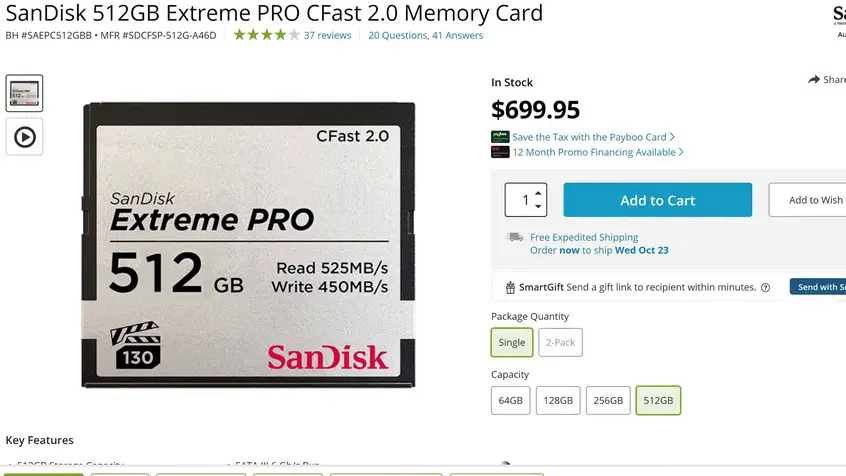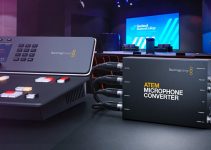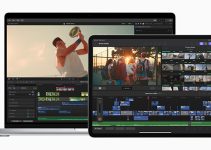A nice and beefy lineup of cameras seems to populate the horizon while myriads of filmmakers and DOPs approaching productions are having now more options than ever, at least in the indie scene. Despite the fact that most blockbusters and big productions are still being shot on REDs and ALEXAs, for those that dwell in the independent scene there are many, many, options available.
So, if you’re dangling trying to choose how to put together your next camera setup, odds are you’ve at least read the spec sheet of the cameras at hand, namely the Canon C200 and the Pocket 6K. Which one to choose, though? Well, Sarah Dietschy will give us her two cents after some extensive testing of the two cameras.
The two rivals are not very much alike, they incarnate two quite different philosophies. The EOS C200 is more of a classical cine-style camera. It has a nice body, lots of outputs, an articulated screen… and it’s heavy.
The Pocket 6K, on the other hand, is inspired by DSLR form factor (slanderers may say it looks like a cheap plastic camera from the 90s), it has limited in and outs and it’s so light you could easily go one-handed. Can we define an actual winner on ergonomics? As always, the best response to give if someone asks you is: it depends.
Sarah seems to prefer the Pocket, but it’s mostly a matter of weight since she often does one-man-band gigs (or should we say one-woman-band?), and often going handheld interviewing talents, so a light camera is a huge plus for her.
On the other side, if you are less prone to solo-handheld gigs, you may find the ergonomics of the C200 to be the better choice in your workflow. The top handle is surely a feature most filmmakers will want, as it’s the double SD slot.

Since we’re talking of card slots, we have to acknowledge that both cameras have CFast slots. The C200 requires it only to shoot in Canon Raw Light while relying on the double SD for the MP4 recording. The second slot can be used either as overflow if the first slot fills up or as a backup recording option on both cards simultaneously.
The Pocket 6K instead has one SD and one CFast slot but offers a very useful USB-C port as well. A fast SSD hooked to the camera is all that you need for a day’s work, thanks to the relatively large SSD capacities now available on the market. You could use the CFast media too, but the expense of a high capacity CFast card will leave your wallet crying.
On the battery side, there’s nothing to say. The poor performance of the Pocket equipped with the Canon LP-E6 batteries is well known in the community. The C200, instead, can easily get through five+ hours of shooting if a large aftermarket battery is used, destroying the atrocious 45-minute runtime the Pocket can score.
To be honest, though, we should mention the ability of the Pocket to use a DC input, but that kind of powering solution defeats the purpose of a lighter camera.
Another difference you’ll spot on the two rivals at first glance is the onboard monitor. Blackmagic is renowned for the screens of the Pocket series. They’re beautiful Full HD displays, bright, with a very good color rendition, fantastic touch functionality but…
But that’s all good until you’re shooting at eye level or in direct sunlight since the screen is fixed, and there’s no way to move it (unless you get one of those kits from Tilta). Unlike the BMPCC 6K, the C200 offers a wonderful steady and sturdy monitor, easy to adjust and a joy to use.
But that’s not where the dominion of the C200 is going to end. Are you going to shoot outside? Remember to pack a couple of ND filters for your BMPCC 6K. If you’re planning to shoot with the Canon offering, you can leave them at home since the camera comes equipped with an internal ND filter, a real lifesaver in many situations.
The same reasoning goes with the AF. There’s almost no point in comparing the two: Canon’s dual-phase AF system is very good and proficient, as it has always been, while the Pocket has an autofocus functionality, but it’s so basic that you’re better off going manual, as you probably already are if you pick that sort of camera.
The narrative and cine-like crowds are not yet ready to leave the manual focus habits, that’s a much more commonly used feature among event filmmakers such as wedding shooters and vloggers.
Anyway, with either of the cameras you’ve shot your video, it’s time to get back home to your editing suite (and that could be the right time to remind you of the studio license key that comes with all Blackmagic’s cameras), and there’s where the magic happens.
Both cameras produce pretty grade-friendly footage, complemented by nice and flat log on the C200 and the recent inclusion of BRAW on the Pocket 6K. In either Resolve or Premiere, you’ll get amazing results, especially in Resolve, once you get past the steep side of the learning curve you can quickly become very proficient.
So in the end, what is going to be the answer to this comparison? There’s one last aspect to factor in that we’ve been ignoring up until now, and that’s price. Price-wise, the Pocket is apparently a no-brainer. It’s so cheap that even buying a couple of those won’t reach the budget needed to get a single C200.
So that’s to say the Pocket is best? Not at all. As we all know, there’s no perfect camera, just the right tool for the job. But still, the Pocket is cheap and that can easily change one’s buying decision.
So, which is the best camera after all? We can only say which one could be the best camera for the job. In fact, you can be the only judge of that, so finally the answer is up to you. So, which one will you choose?
[source: Sara Dietschy]
Order Links:
Canon EOS C200 Cinema Camera (B&H, Amazon)
Blackmagic Design Pocket Cinema Camera 6K (B&H, Amazon)
Disclaimer: As an Amazon Associate partner and participant in B&H and Adorama Affiliate programmes, we earn a small comission from each purchase made through the affiliate links listed above at no additional cost to you.




